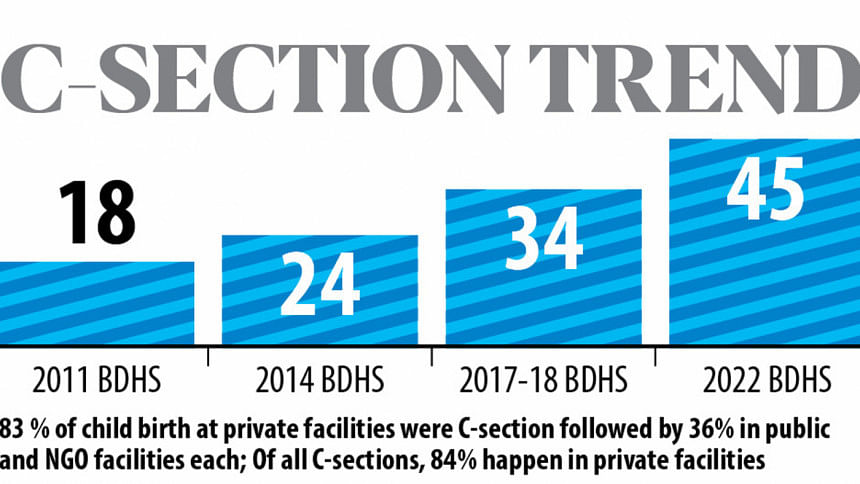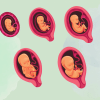C-sections now 45pc of all deliveries

The number of C-sections performed in the country has increased to at least 45 percent in the two years preceding 2022.
According to a key indicator report of Bangladesh Health and Demographic Survey (BDHS) published yesterday, the percentage of caesareans, mostly unnecessary, was 34 in 2017-2018 and 18 in 2011.
Since 1985, the international healthcare community has considered the "ideal rate" for C-sections to be between 10 to 15 percent, according to the World Health Organization.
Of the C-sections performed, private facilities accounted for around 84 percent, according to the survey, unveiled at an event in a hotel in the capital.
"Unnecessary C-sections put both the mothers and the children at unnecessary health risks. But it is booming uncontrollably in the country every day," Dr Setara Rahman, a gynecologist and Country Director of Johns Hopkins Program for International Education in Gynecology and Obstetrics, told The Daily Star.
In the two years preceding the 2022 survey, a total of 36.03 lakh children were born.
Conducted by the National Institute of Population Research and Training, with technical assistance from partners, the survey provides crucial data on key health indicators to guide policies and programmes aimed at improving the people's health and well-being.
The findings highlight significant improvements needed in maternal and child healthcare over the past five years.
One of the achievements highlighted in the 2022 survey was the decline in the childhood mortality rate.
The under-5 mortality rate decreased from 43 to 31 per 1,000 live births, and neonatal mortality rate declined from 27/1,000 to 20/1,000 live births between 2017 and 2022, reflecting a commendable 12 percent decrease. This decline can be attributed to increased access to quality health services, including facility deliveries and skilled birth attendance.
The BDHS-2022 also showed a decrease in stunting among children under five -- from 31 percent to 24 percent between 2017 and 2022, indicating improvements in child nutrition.
However, the rate of underweight children remained unchanged at 22 percent, highlighting the need for continued efforts to address malnutrition.
The survey also revealed positive trends in facility deliveries, with an increase from 51 percent in 2017 to 65 in 2022.
Furthermore, the survey showed an improvement in equity in the use of facilities for delivery care among different economic groups.
Some 88 percent of pregnant women are also receiving at least one antenatal care session from a trained provider -- up from 2017's 82 percent.
However, the proportion of women receiving ANC4+ (four sessions of antenatal care) declined from 47 percent in 2017 to 41, due to the Covid-19 pandemic.
According to the survey, the Total Fertility Rate (TFR )-- the average number of children a woman would have by the end of her childbearing age– has remained static at 2.3 as same as the TFRs in the previous three BDHS.

 For all latest news, follow The Daily Star's Google News channel.
For all latest news, follow The Daily Star's Google News channel. 








Comments